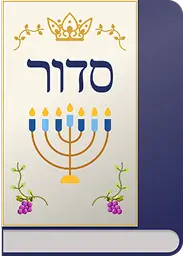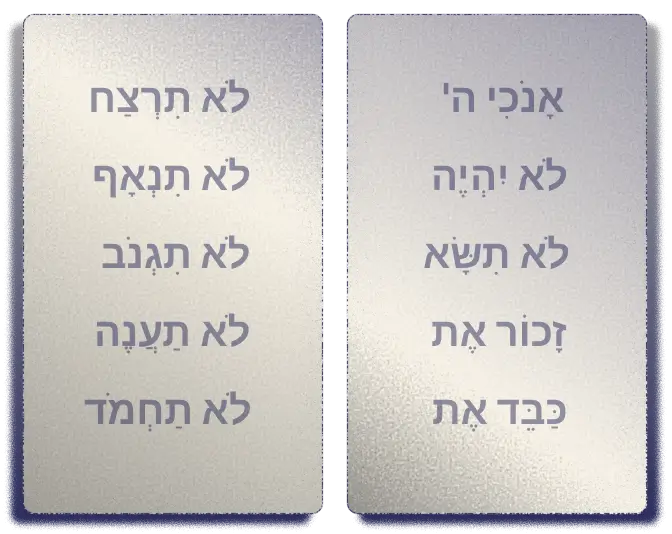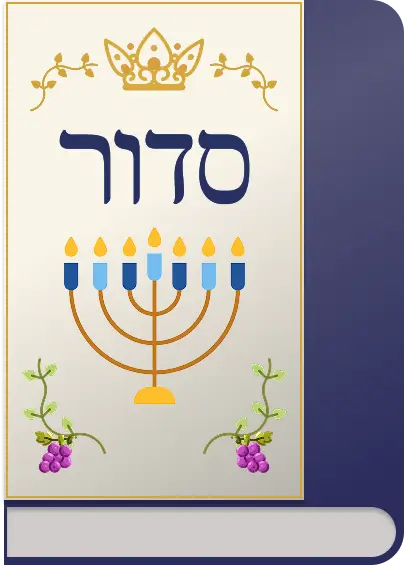

The patriarch Avraham emerges in the Torah as the prototype of faith and ethical courage. Isaiah’s epithet is strikingly intimate: “Seed of Abraham My friend” (Isaiah 41:8). The Talmud, however, frames a disquieting problem at the heart of covenantal history. In Nedarim 32a we read:
“Abraham our Patriarch — why was he punished, and his children enslaved to Egypt for 210 years?”
At stake is not merely historical causation but the moral structure of the covenant. The Torah enshrines a principle of judicial non-transferability:
“Parents shall not be put to death for children, nor children be put to death for parents; each person shall die for his own sin.” (Deuteronomy 24:16)
The Prophets reaffirm the same rule:
“Only the person who sins shall die. A child shall not share the burden of a parent's guilt, nor shall a parent share the burden of a child's guilt.” (Ezekiel 18:20)
How, then, can exile be traced to the conduct of the patriarch?
The sugya articulates three distinct lenses through which Avraham’s greatness — and its consequences — are read:
1) Militarization of Disciples (Rabbi Abahu in the name of Rabbi Elazar).
The charge is that Avraham “made a draft [angarya] of Torah scholars,” grounding it in Genesis 14:14 — “He armed his trained men, those born in his household.” Here, even defensive, duty-bound warfare by Torah-devoted retainers carries spiritual costs at Avraham’s exalted level.
2) The Question at the Covenant (Shmuel).
During the Brit bein ha-Betarim, Avraham asks “בַּמָּה אֵדַע כִּי אִירָשֶׁנָּה” — “How shall I know that I shall inherit it?” (Genesis 15:8) and receives an answer of destiny: “Know well that your offspring shall be strangers…” (Genesis 15:13). The sugya reads this not as disbelief but as the infinitesimal hesitation unfitting for one at his spiritual altitude — an educative decree rather than retribution.
3) A Missed Moment of Kiddush Hashem (Rabbi Yochanan).
After victory over the four kings, Avraham’s refusal to appropriate spoils (vis-à-vis the king of Sodom) is noble restraint; yet the view here is that he might have leveraged the moment to sanctify the Divine Name publicly and draw rescued persons under the Abrahamic banner (Genesis 14:21–24).
The three approaches sketch a triangular field of leadership tension: action vs. faith, inquiry vs. trust, restraint vs. outreach. They do not denigrate Avraham; they magnify him by holding a tzaddik to standards of hair’s-breadth precision.
Crucial to the classical conversation is the distinction between punitive guilt and covenantal consequence. The Torah’s bar on vicarious punishment stands; the Talmudic reading reframes the exile as pedagogy for a people forged to be a kingdom of priests. Three major mefarshim make that logic explicit:
Thus the “why” in Nedarim 32a is not a calculus of blame but a theology of refinement: a tzaddik’s micro-deviation, measured at the altitude of intimacy with G-d, sets the stage for a people’s macro-correction.
The Mussar tradition makes this principle programmatic. In Mesilat Yesharim 4, Ramchal invokes the rabbinic maxim that the Holy One “scrutinizes judgment on His pious ones to the breadth of a hair” (Yevamot 121a). He then applies it to Avraham explicitly:
“Even so, he did not escape from judgment for slight words which he was not meticulous in, namely, for merely saying ‘with what will I know?’”
Ramchal’s point is not that Avraham’s faith faltered; rather, the nearer one stands to the Divine light, the narrower the tolerances become. What registers as negligible lower down is weighty at the summit. In that register, exile functions as education: the covenantal nation learns Avraham’s question by living its answer.
The same chapter cites a second illustration from Bereishit Rabbah 54 regarding Avraham’s covenant with Avimelech — a well-intended political act with long historical ripples. The Midrash’s rhetoric underscores the thesis: in a world governed by midat ha-din for the righteous, even “slight words” and prudent treaties carry teleological consequences.
Do these readings compromise the prophetic insistence that each soul bears only its own guilt? They need not — provided we maintain the category separation already implicit in Tanakh:
Indeed, the Torah’s own narrative logic confirms this. The decree that Avraham’s seed will be strangers (Genesis 15:13) is accompanied by the promise of redemption (Genesis 15:14). The exile is embedded in a teleological arc whose end is Yetziat Mitzrayim, Sinai, and the birth of a Torah people.
Seen through this lens, Nedarim 32a elevates Avraham rather than diminishes him. The sugya presumes his singular stature; it is precisely because he is אֹהֲבִי — “My friend” (Isaiah 41:8) — that his (hair’s-breadth) becomes the nation’s מַכָּה בַּפָּטִישׁ (final shaping blow). The exile is not Divine anger but Divine artistry. Avraham’s בַּמָּה אֵדַע becomes Israel’s יָדוֹעַ תֵּדַע — a knowledge inscribed not only in mind but in collective memory.
This frames the program of the series that follows. If Part I establishes the covenant’s moral grammar — consequence, not punishment — then Parts II–VI will trace how Ramchal turns that grammar into discipline: from Zehirut (vigilance) to Zerizut (alacrity), Nekiyut and Taharah (Cleanliness and Purity of Intention), Kedushah (holiness), and finally Ruach HaKodesh (inspiration). The question posed in Part I — How can a saint’s hair’s-breadth shape centuries? — receives its practical answer: by forming a people whose spiritual tolerances are trained to the same precision.






Lech Lecha
Avraham’s call inaugurates covenantal consciousness: leaving habit for purpose. His question “How shall I know?” becomes the hinge of history — faith refined through inquiry.
Vayera
Hospitality, advocacy, and Akeidah — three crucibles of trust. The patriarch’s perfection under pressure embodies the “storm around Him,” Divine scrutiny of the righteous.
Chayei Sarah
Negotiating for Machpelah models ethical precision: speech weighed, commerce sanctified. Exile’s justice begins in transparent dealings.
Toldot
Intergenerational echo of covenant consequence: Isaac relives famine and wells — ma’aseh avot siman le-banim as spiritual genetics.
Shemot
The exile decreed to Avraham unfolds. Israel’s bondage becomes the realization of “Know that your offspring shall be strangers” — consequence as covenantal education.
Bo
Redemption fulfills the promise embedded in Avraham’s vision. Egypt’s plagues and the Brit Damim (blood covenant) close the circle: knowledge through experience.


#1 – To know there is a G-d — Exodus 20:2
In Lech Lecha: Avram responds to direct revelation (“HaShem said to Avram: Lech lecha”), lives by that knowledge, and builds altars in gratitude.
In Shemot: Israel learns that knowledge is not abstract; “I am HaShem your G-d” transforms faith into a national consciousness that demands constant awareness.
Narrative roots: Genesis 12:1-7, 12:8, 13:4.
#2 – Not to entertain thoughts of other gods — Exodus 20:3
In Lech Lecha: Avram rejects the mental idols of Mesopotamia—his first act of Zehirut is inward: clearing the heart’s distractions before stepping forward.
In Shemot: Egypt’s collapse of false divinities dramatizes vigilance of thought; redemption begins by purging mental idolatry.
Narrative roots: Genesis 11:31–12:1, 15:7.
#3 – To know that He is One — Deuteronomy 6:4
In Lech Lecha: Avram proclaims unity amid plurality; he embodies mindful coherence against the noise of nations.
In Shemot: “I am that I am” (Exodus 3:14) becomes the watchword of clarity—awareness stripped of illusion.
Narrative roots: Genesis 12:8, 13:4, 18:19.
#4 – To love Him — Deuteronomy 6:5
In Lech Lecha: Avram leaves all for love; he “calls out” in HaShem’s Name, turning personal affection into mission.
In Shemot: Love matures through service—Israel follows HaShem into the desert, sustained by trust.
Narrative roots: Genesis 12:1-4, 18:18-19.
#5 – To fear Him — Deuteronomy 10:20
In Lech Lecha: Avram’s awe is revealed in covenantal obedience; his yirah keeps passion balanced by humility.
In Shemot: Sinai’s thunder engraves this awe—“so that His fear may be before you, that you not sin.”
Narrative roots: Genesis 15:12, 22:12.
#6 – To sanctify His Name — Leviticus 22:32
In Lech Lecha: Avram’s refusal of Sodom’s spoils creates the first public Kiddush Hashem; he chooses moral clarity over gain.
In Shemot: Moshe’s leadership magnifies that sanctity—action so the nations will say, “Surely this is a wise and understanding people.”
Narrative roots: Genesis 14:21-24, 18:19.
#7 – Not to profane His Name — Leviticus 22:32
In Lech Lecha: Avram’s alliances and restraint show the balance between worldly involvement and divine integrity.
In Shemot: Israel’s fall into Egyptian assimilation reveals the peril of chilul Hashem through moral drift.
Narrative roots: Genesis 14:22-23, 20:11.
#11 – To emulate His ways — Deuteronomy 28:9
In Lech Lecha: Avram’s compassion for captives and strangers anticipates the Divine traits of rachum v’chanun.
In Shemot: HaShem’s own mercy revealed in “compassionate and gracious G-d” (Exodus 34:6) completes the pattern Avraham began.
Narrative roots: Genesis 18:1-8, 19:27-29.
#12 – To cleave to those who know Him — Deuteronomy 10:20
In Lech Lecha: Avram gathers disciples—“the souls he made in Charan”—a prototype for attachment to tzaddikim.
In Shemot: Moshe cleaves to Yitro and then to HaShem on Sinai, transmitting the same chain of devotional cleaving.
Narrative roots: Genesis 12:5, 14:14.
#22 – To learn Torah and teach it — Deuteronomy 6:7
In Lech Lecha: Avram “calls out” in HaShem’s Name and spreads da’at; his altars are teaching stations of faith.
In Shemot: Torah becomes the nation’s constitution—knowledge now formalized as law.
Narrative roots: Genesis 12:8, 18:19.
#75 – To repent and confess — Numbers 5:7
In Lech Lecha: Avram’s “Ba-mah eida” is an instant of holy self-questioning, a prototype for cheshbon ha-nefesh.
In Shemot: National teshuvah manifests through bondage and redemption—sin becomes the classroom of return.
Narrative roots: Genesis 15:8-14, 17:3.
#563 – To judge righteously — Deuteronomy 16:18
In Lech Lecha: Avram’s plea for Sodom is the prototype of justice tempered by mercy—“Shall the Judge of all the earth not do justice?”
In Shemot: Moshe institutes courts and delegated judges, fulfilling Avraham’s vision of ethical accountability.
Narrative roots: Genesis 18:23-33, Exodus 18:13-26.

Dive into mitzvot, prayer, and Torah study—each section curated to help you learn, reflect, and live with intention. New insights are added regularly, creating an evolving space for spiritual growth.

Explore the 613 mitzvot and uncover the meaning behind each one. Discover practical ways to integrate them into your daily life with insights, sources, and guided reflection.

Learn the structure, depth, and spiritual intent behind Jewish prayer. Dive into morning blessings, Shema, Amidah, and more—with tools to enrich your daily connection.

Each week’s parsha offers timeless wisdom and modern relevance. Explore summaries, key themes, and mitzvah connections to deepen your understanding of the Torah cycle.